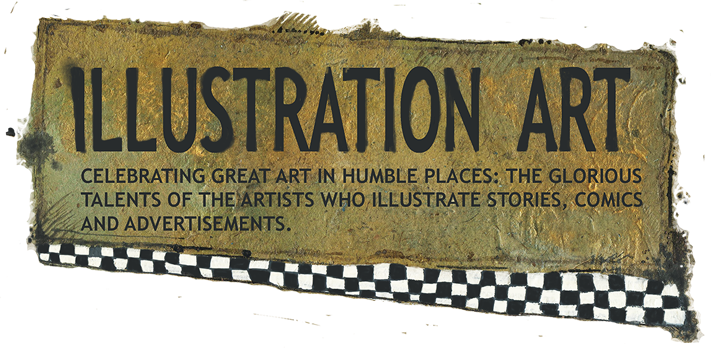Look at how lovingly Rockwell paints three different kinds of gold surfaces. The gilded wooden torch:
The letters on the boy's banner:
The metal wreath on the boy's head:
Rockwell didn't just dip his brush in gold paint three times. He went back to the beginning and re-learned the nature of gold three times.
Rockwell was one of history's great materialists. He examined and described material objects, their surfaces, their volumes, their textures and qualities with fanatical devotion.
Growing up, Norman Rockwell had an uneasy relationship with the physical world. Scrawny, pale, nearsighted and pigeon toed, Rockwell was embarrassed by his frail physique. When he was ten, he tried exercising but gave up after a month. His insecurities continued to haunt his early work.

But like an unrequited lover, he worshiped the physical world from afar. It's hard to name
another 20th century artist with a greater appreciation for physical matter. It's not always easy to tell from the way Rockwell's work has been reproduced in cheap magazines. But compare this printed cover for the Saturday Evening Post:
with the big, glowing original painting hanging on the wall at the Rockwell museum:
His description of the girl's plastic raincoat is a tour de force:

Notice the attention he paid to the rim on the lid of the paint can, or the bottle of medium, or the scuffed shoe:
.jpg)
Similarly, there is nothing formulaic about Rockwell's treatment of the wooden box. Those lines are not straight because Rockwell understood and cared about how the box had been treated on its voyage through the material world. Here is intense, honest observation:

.jpg)
For another example, in the corner of Rockwell's painting of a pharmacist...

... you can see that he didn't neglect the bottles, the test tube, the spoon. Importantly, these obsessive details are not described with photographic realism, as Rockwell's thousands of clueless imitators would surely have painted them. They are expressed through the loving eyes of someone with rapturous appreciation for their physical qualities...
... right down to the nuances of the cork and the character of the string around the bottle.
There have been other great materialists in art before Rockwell. Vermeer and the golden age Dutch painters delighted in the properties of fine material objects: the textures and patterns of lovely fabrics and tapestries, the sheen of metals, the soft feel of furs.
 |
| Note Gabriel Metsu's attention to the gold frame and oriental rug |
Renaissance art was also a period of great materialists. Freed from the medieval focus on the supernatural (and spurred on by the invention of soap) Renaissance painters obsessed over the surfaces of the secular world-- the nuances of human flesh and the reflections of armor.
Norman Rockwell was a true materialist in that tradition and, in my view, can walk proudly in that company.





.jpg)
.jpg)


.jpg)
.jpg)
.jpg)

.jpg)





.jpg)

.jpg)

.jpg)
.jpg)
.jpg)











,_1647-51,_01.jpeg)







.jpeg)





